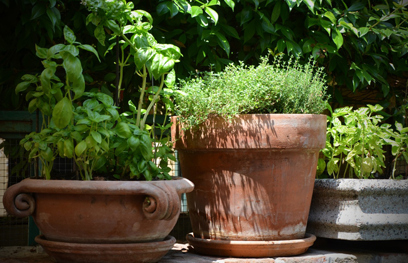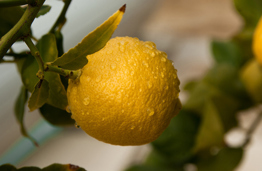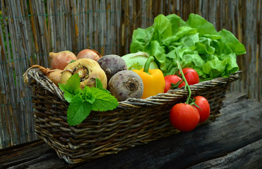List of Herbs - Classification as Trees or Vegetables vis-à-vis Kila'im

This comprehensive list of common herbs with English, Hebrew, and Latin names, categorizes them as trees or vegetables, to avoid kilei zera'im and kilei hakerem. Since different halachic guidelines govern kila’im for vegetables and trees, this is a valuable reference.
Below is a list of common herbs. We divided them up into three categories: (1) plants with a perennial trunk, which are considered trees. Kilei zera’im do not apply to these plants, and if we sow them in a vineyard, the prohibition of kilei hakerem does not apply; (2) an intermediate category of perennial grasses that do not have a trunk. These perennial grasses grow back either from the root or from the root stem, and they are viewed by halacha as a vegetable, so both kilei zera’im and kilei hakerem apply here; and (3) annual plants, which are also treated as vegetables and both kilei zera’im and kilei hakerem apply to them.
Blessings on smelling:
A herb defined as a tree - the blessing is borei atzei besamim.
A herb defined as a vegetable - the blessing of smell is borei isbei besamim.
In a situation of doubt - the blessing is borei minei besamim.
|
Common Name |
Hebrew Equivalent |
Latin Name |
Perennial = Tree |
Perennial Grass = Vegetable |
Annual = Vegetable |
|
Oregano |
(אורגנו (איזובית פשוטה |
Origanum vulgare |
√ |
|
|
|
Bible Hyssop |
אזוב מצוי |
Origanum syriacum |
√ |
|
|
|
Alfalfa |
אספסת תרבותית |
Medicago sativa |
|
√ |
|
|
Asparagus |
אספרג רפואי |
Asparagus officinalis |
|
√ |
|
|
Chamomile |
בבונג דו גוני |
Matricaria recutita (chamomilla) |
|
|
√ |
|
Basil |
(בזיליקום (ריחן |
Ocimum basilicum |
√ |
|
|
|
Hyssop |
בן אזוב רפואי |
Hyssopus officinalis |
√ |
|
|
|
White micromeria |
זוטה לבנה |
Micromeria fruticosa |
√ |
|
|
|
Za’atar (hyssop)[1] |
(זעתר (אזוב מצוי |
Majorana syriaca |
√ |
|
|
|
Garden sorrel |
חומעת הגינה |
Rumex acetosa |
√ |
|
|
|
Fenugreek |
(חילבה (גרגרנית יונית |
Trigonella foenum- graecum |
|
|
√ |
|
Tarragon |
(טרגון (לענת הטרגון |
Artemisia dracunculus |
√ |
|
|
|
Monks cress |
כובע הנזיר |
Tropaeolum majus |
|
|
√ |
|
Coriander |
(כוסברה (גד השדה |
Corriandrum sativum |
|
|
√ |
|
Cumin |
כמון תרבותי |
Cuminum cyminum |
|
|
√ |
|
Anise |
כמנון האניס |
Pimpinella anisum |
|
|
√ |
|
Lavender |
(לבנדר (אזוביון |
Lavandula angustifolia |
√ |
|
|
|
Lemon verbena |
לואיזה לימונית |
Lippia triphylla |
√ |
|
|
|
Lovage |
'לווג |
Levisticum officinale |
|
|
√ |
|
Mizuna (kyona) |
מיזונה |
Mizuna |
|
|
√ |
|
Lemon balm |
מליסה |
Melissa officinalis |
|
√ |
|
|
Sage |
מרווה רפואית |
Salvia officinalis |
√ |
|
|
|
Mint |
נענע |
Mentha |
|
√ |
|
|
Chives |
(עירית (שום העירית |
Allium schoenoprasum |
|
√ |
|
|
Lemongrass |
(עשב לימון (גראס |
Cymbopogon |
|
√ |
|
|
Parsley |
פטרוזיליה |
Petroselinum hortense |
|
√ |
|
|
Fringed rue[2] |
(פיגם מצוי (רוטה |
Ruta chalepensis |
√ |
|
|
|
Rose geranium |
פלרגון חריף (גרניום לימוני) |
Pelargonium graveolens |
√ |
|
|
|
Thyme |
(קורנית (טימין |
Thymus vulgaris |
|
√ |
|
|
Rosemary (medicinal) |
(רוזמרין (רפואי |
Rosmarinus officinalis |
√ |
|
|
|
Arugula (rocket) |
(רוקולה (רוקט, בן-חרדל |
Eruca sativa |
|
|
√ |
|
False rhubarb |
ריבס הגינה |
Rheum rhaponticum |
|
√ |
|
|
Garlic |
שום הגינה |
Allium sativum |
|
√ |
|
|
Tree wormwood |
(שיבא (לענה שיחנית |
Artemisia arborescens |
√ |
|
|
|
Dill |
(שמיר (שבת |
Anethum graveolens |
|
|
√ |
|
Clover |
תלתן |
Trifolium |
|
|
√ |
[1] Za’atar is not the name of a plant, but rather the common term used for a mixture of spices, the major ingredient being hyssop.
[2] While some are stringent and forbid planting common fringed rue in a vineyard, see the article by Rabbi Ehud Ahituv “Fringed rue in the Vineyard,” Emunat Itecha 96 (5772), pp.33–39 (Hebrew).



